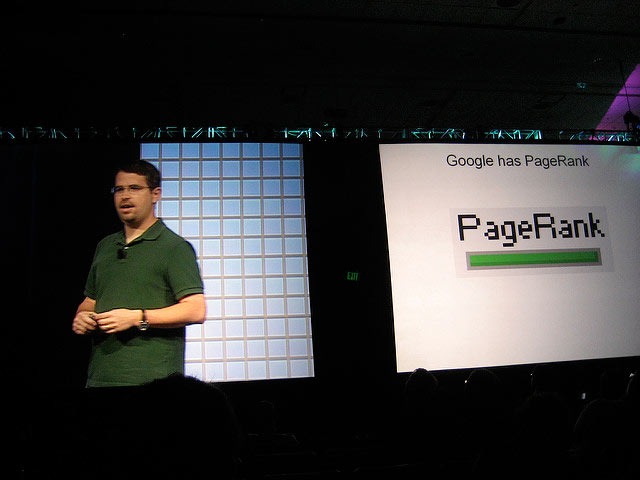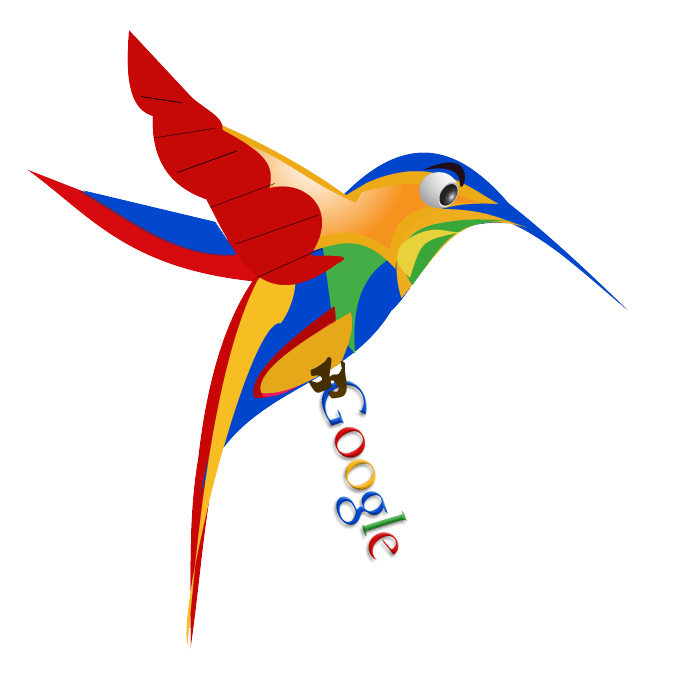Google Ranking Indicators and the Death of PageRank
It was recently announced that Google have finally put out to pasture their infamous algorithmic website ranking system PageRank, but what exactly is/was PageRank and does it have a natural successor?
Whilst the metric of PageRank as a measure by which to judge the SEO value of pages across the web has been largely irrelevant for many years now, the final nail in its coffin was hammered into place when Google announced last month that toolbars displaying PageRank values would cease to work in the coming weeks. Its long awaited retirement had finally become official.

Image source: Christian Van Der Henst S. via Flickr cc
PageRank – A Potted History
Named after Google co-founder Larry Page, the PageRank algorithm was the very cornerstone of the search giant’s success and its development in 1996 directly lead to the formation of Google – the first search engine to consistently return relevant and accurate search results. To try and put it into layman’s terms PageRank was a value between 0-10 that Google attributed all websites it indexed. The higher the number, the higher that site’s perceived worth in the eyes of the world’s most dominant search engine. If your site was assigned a PageRank of 10 you could expect to see it dominate the search results pages whereas a PageRank of 0 meant you had a lot of work on your hands to try and start mixing it with the big boys.
But this mysteriously determined numerical value held more powers than simply helping the big sites beat the smaller ones when it came to popping up at the top of Google. PageRank also impacted upon link equity (or link juice if you prefer) being passed to those sites lucky enough to have been referenced. A link coming from a PR10 site was worth, say, ten times as much as a link from a lesser PR1 site.
With the above in mind it became increasingly common for webmasters and SEO types to obsessively chase PageRank, both in terms of improving their own scores and by way of gaining links from those perceived high quality sites that were able to boast a high PageRank value. And of course once PageRank became a highly prized commodity, the lengths people would go to in order to profit from it became more and more pronounced. This essentially gave rise to an underground marketplace for shady types to buy and sell links from high PageRank websites, cheating the system and devaluing Google’s clever method by which to sort the wheat from the chaff.
So. Farewell Then. PageRank
Not many in the SEO community will have been surprised by the move to discontinue any support for the tools that still report the PageRank value of a website as it has long been understood that PageRank’s days were numbered. The mass buying and selling of links and domains based around PageRank values served to highlight how it had become far too simplistic a measure of a site’s worth and it was telling that Google last updated toolbar PageRank in December 2013, thereafter letting it stew in its own irrelevance.

Image source: Danny Sullivan via Flickr cc
In much the same way as the big G has regularly tweaked its core algorithms to refine and improve them, keeping the SEO industry on its toes and preventing anyone from unfairly gaming the system with sneaky workarounds and loopholes, PageRank too had to be revisited. Except in this case instead of being updated or improved upon it was simply relegated to history, leaving the door open for fresh new metrics for scoring and ranking the billions upon billions of pages Google has in its index.
What's PageRank’s Natural Successor?
As the world adapts to life after PageRank thoughts naturally turn to its potential replacement; what’s the clearly identifiable and quantifiable measurement by which we can now assess a page’s Google worth? The answer is not so straightforward and in truth there is no one single replacement to step into PageRank’s sizeable shoes. The way the Internet has developed, with a considerably greater number of web-savvy folk regularly logging on today than when Google and PageRank were born some 20 years ago, has meant that a system as rudimentary as PageRank simply wouldn’t cut the mustard in 2016 and beyond.
The official list of Google ranking signals and the worth attributed to each is of course a closely guarded secret, however we do now know that the top three factors that contribute to a site’s ranking are links (both quantity and quality), content (quality and relevance) and Google’s AI powered RankBrain algorithm. We know this thanks to a recent Q&A in which senior Googler Andrey Lipattsev confirmed that RankBrain was now the third most important factor in ranking websites.

Image source: ThoughtShift
Could it be claimed that RankBrain is PageRank’s natural successor then? Well not really. There’s no RankBrain 1-10 scale of measuring websites and as part of the core Hummingbird algorithm (the main mother algorithm Google uses for all its various methods of determining ranking positions) it is more a measure of honing down a user’s particular search query than it is a definitive assessment of a page’s value or worth. In fact RankBrain is more a nod to the increasing significance of semantic search as a method by which Google determines the most relevant results to return for any given search query.
The Google of 2016 is far better at identifying the needs of different users searching the same query, taking educated guesses at the precise nature of their specific individual needs. This in turn has given rise to the art of latent semantic indexing, the fancy name given to what is essentially Google’s improved ability to process natural language and identify the correct intent from it, based on numerous factors from location through to search history. Consequently the idea of attributing a numerical value to a page by way of identifying its worth isn’t so much outdated as it is entirely mystifying as to how it was ever useful in the first place.
Follow my contributions to the blog to find out more about Google updates, semantic search and the importance of content quality, or sign up to the ThoughtShift Guest List, our monthly email, to keep up-to-date on all our blogposts, guides and events.
